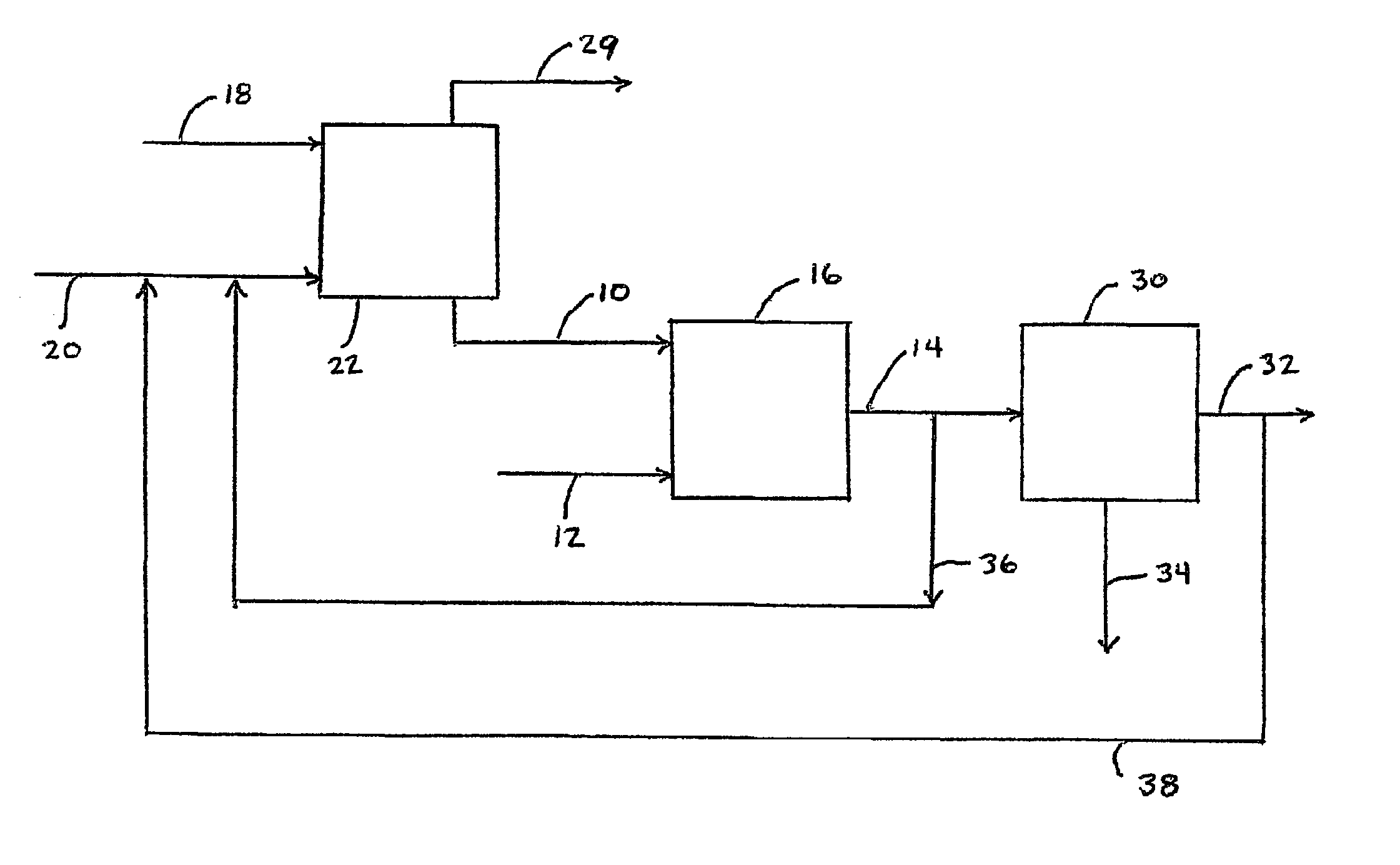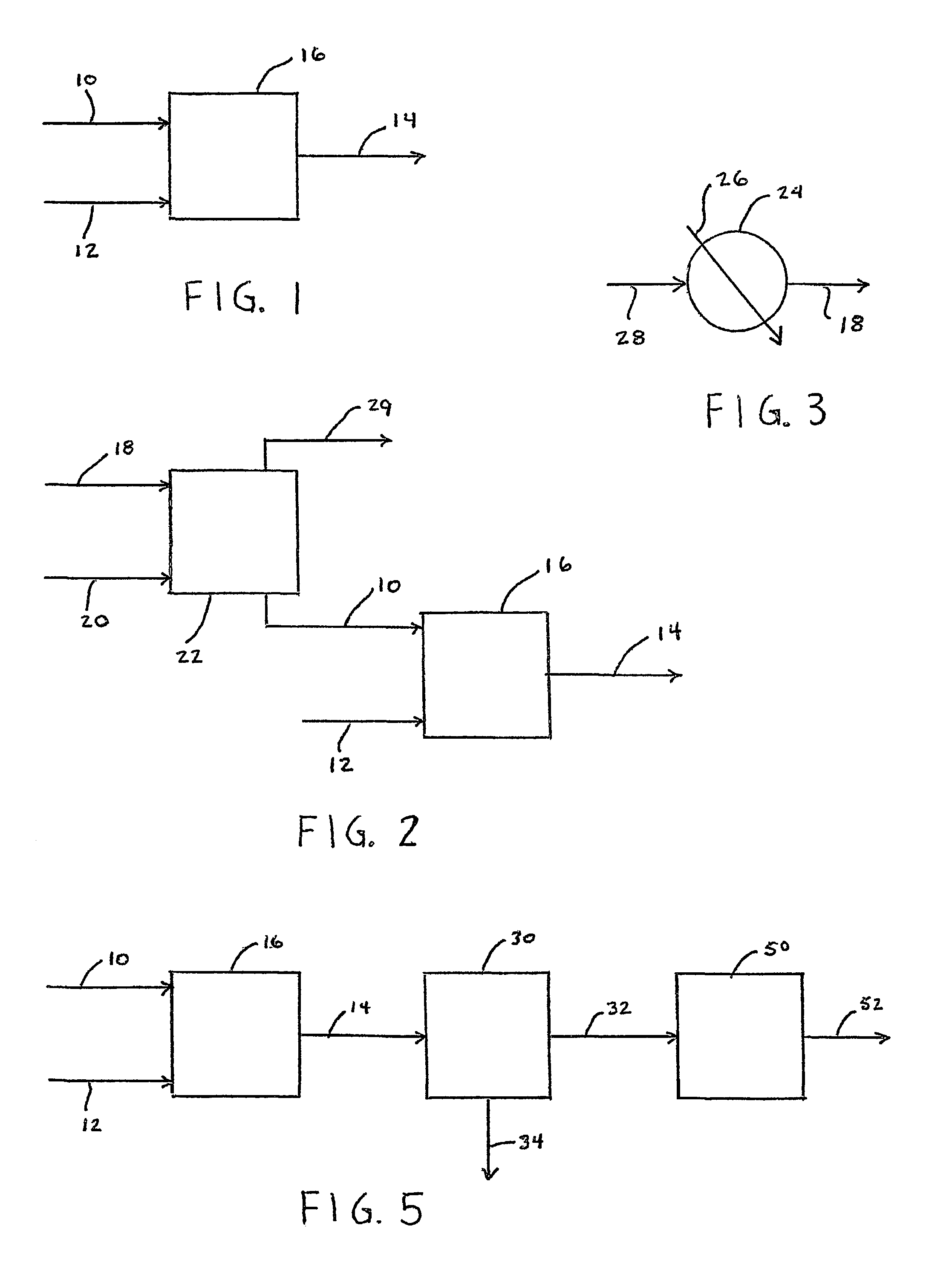Universal method and apparatus for conversion of volatile compounds
a technology of volatile compounds and conversion methods, applied in the field of universal methods and conversion methods of volatile compounds, can solve the problems of increasing the restrictions on the discharge of such contaminants, high energy and power penalties, and many methods used are prohibitively expensive, so as to increase the ultimate process capture efficiency, reduce the concentration of volatile contaminants, and reduce the effect of volatility
- Summary
- Abstract
- Description
- Claims
- Application Information
AI Technical Summary
Benefits of technology
Problems solved by technology
Method used
Image
Examples
Embodiment Construction
[0060]The current invention includes a process and apparatus for reacting the contaminants with an oxygenation source to convert the contaminants primarily to intermediate products with desirable characteristics. By contacting volatile organic contaminants with the limited oxygenation source, such molecules are converted into compounds that preferably are themselves much less volatile or non-volatile. This limited reaction produces a range of products, depending on the contaminants. Ketones, aldehydes, alcohols, polyols and compounds containing carboxylic acid and / or carbonyl functional group(s) can result. By controlling and limiting the oxygenation reaction to create the intermediate products such as the salts of carboxylic acids, di-acids, polyols and amphoteric compounds such as diacid polyols and the like, the contaminants are modified into components that act as volatile compound absorbents that can emulsify additional volatile components, that would not be otherwise captured,...
PUM
| Property | Measurement | Unit |
|---|---|---|
| time | aaaaa | aaaaa |
| solubility | aaaaa | aaaaa |
| volatile | aaaaa | aaaaa |
Abstract
Description
Claims
Application Information
 Login to View More
Login to View More - R&D
- Intellectual Property
- Life Sciences
- Materials
- Tech Scout
- Unparalleled Data Quality
- Higher Quality Content
- 60% Fewer Hallucinations
Browse by: Latest US Patents, China's latest patents, Technical Efficacy Thesaurus, Application Domain, Technology Topic, Popular Technical Reports.
© 2025 PatSnap. All rights reserved.Legal|Privacy policy|Modern Slavery Act Transparency Statement|Sitemap|About US| Contact US: help@patsnap.com



